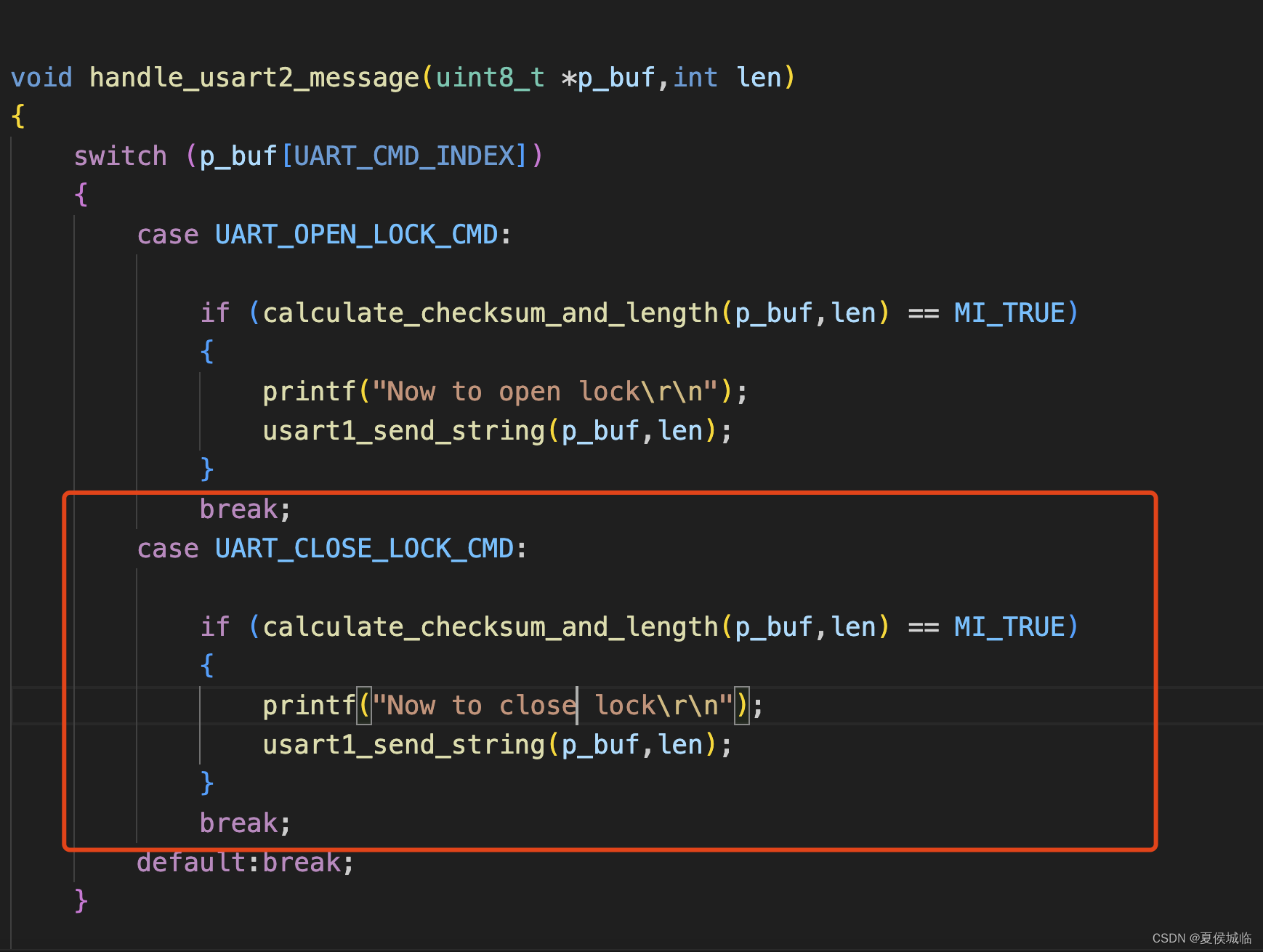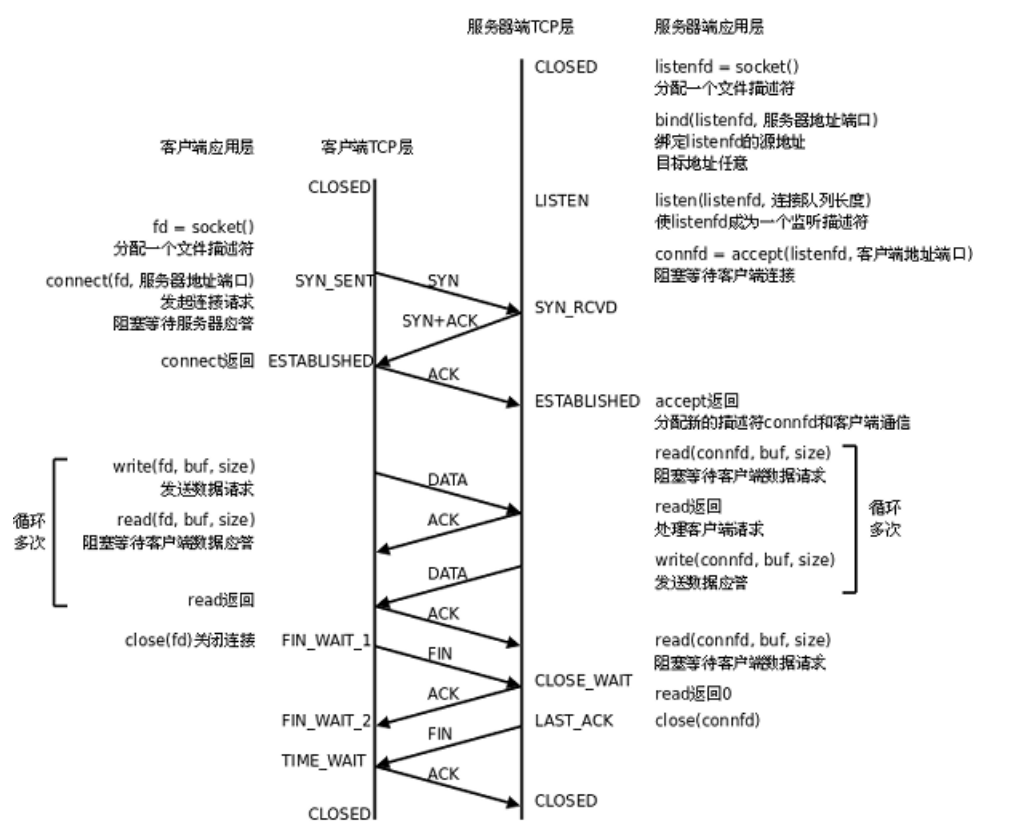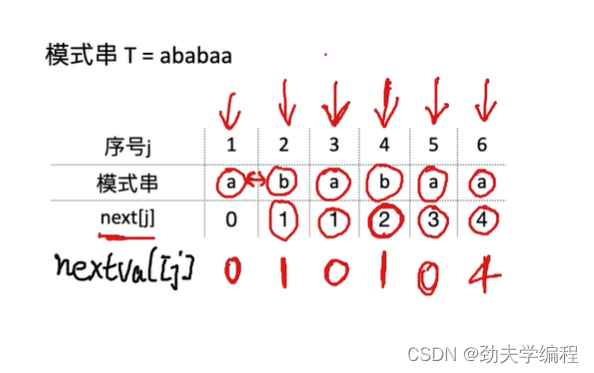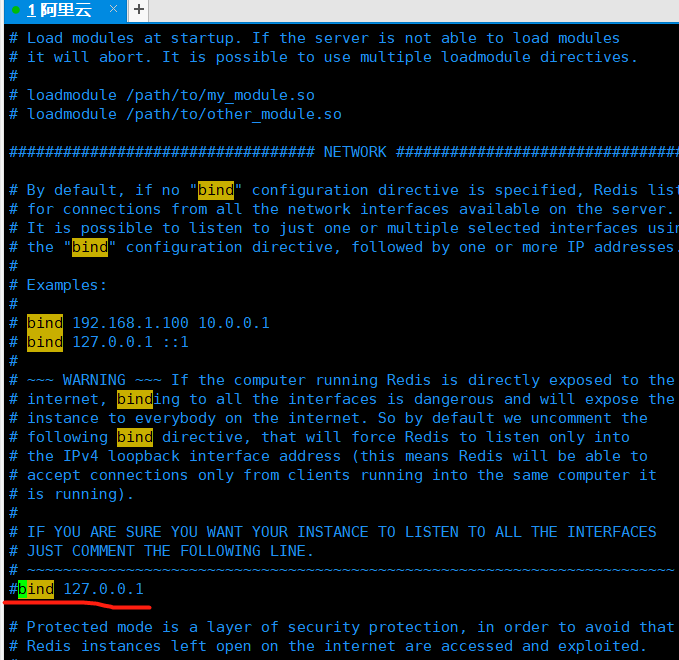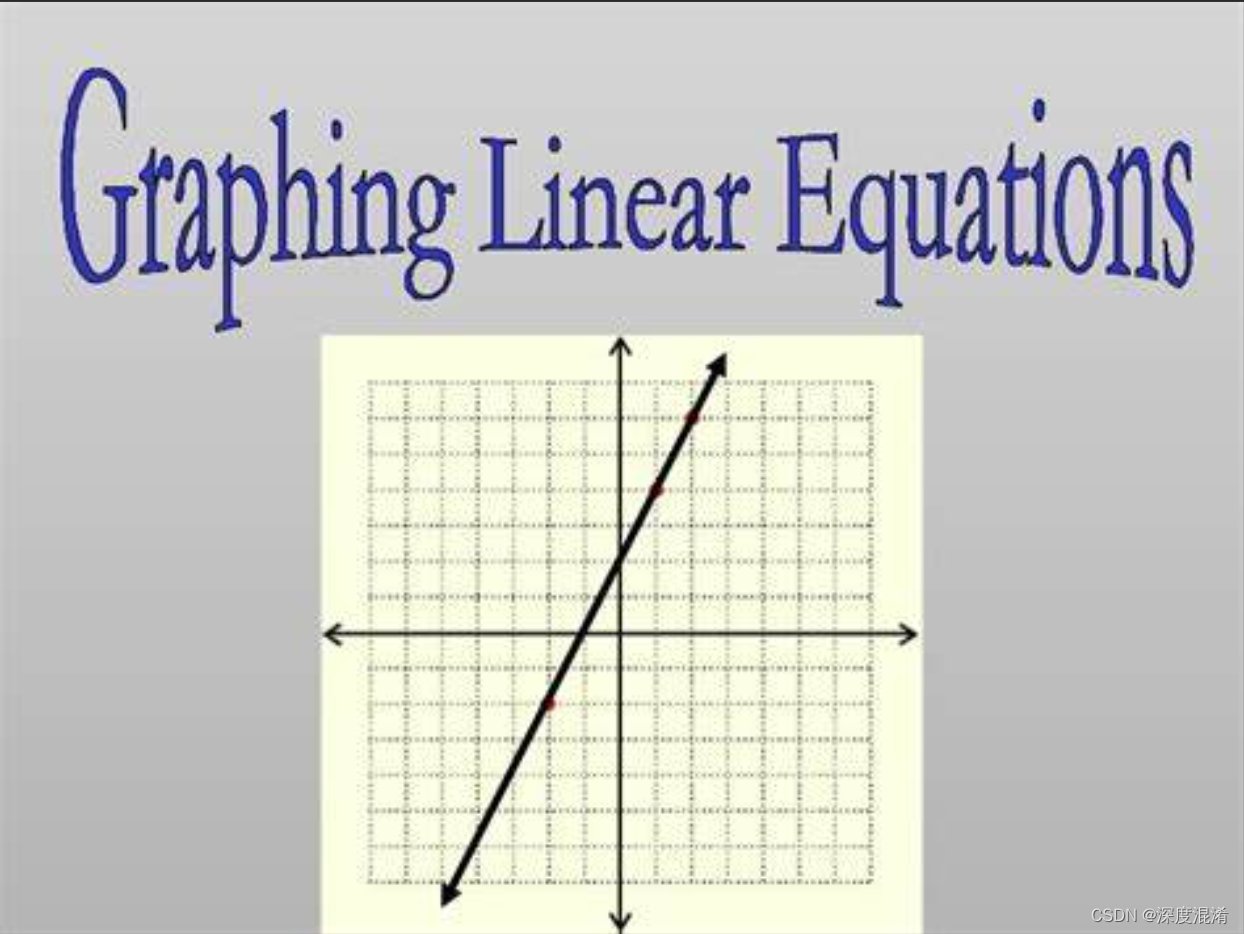介绍
Integer是int类型的包装类,继承自Number抽象类,实现了Comparable接口。提供了一些处理int类型的方法,比如int到String类型的转换方法或String类型到int类型的转换方法,当然也包含与其他类型之间的转换方法。
- Comparable提供了比较大小的功能
- Number抽象类主要抽象出了对数值类型的转换方法。
public final class Integer extends Number implements Comparable<Integer>

常量&变量
/**
* A constant holding the minimum value an {@code int} can
* have, -2<sup>31</sup>.
*最小值0x80000000
*/
@Native public static final int MIN_VALUE = 0x80000000;
/**
* A constant holding the maximum value an {@code int} can
* have, 2<sup>31</sup>-1.
* 最大值0x7fffffff
*/
@Native public static final int MAX_VALUE = 0x7fffffff;
/**
* The {@code Class} instance representing the primitive type
* {@code int}.
*
* @since JDK1.1
* int的原始类型
*/
@SuppressWarnings("unchecked")
public static final Class<Integer> TYPE = (Class<Integer>) Class.getPrimitiveClass("int");
/**
* All possible chars for representing a number as a String
* 数字表示为字符串的所有可能字符
*/
final static char[] digits = {
'0' , '1' , '2' , '3' , '4' , '5' ,
'6' , '7' , '8' , '9' , 'a' , 'b' ,
'c' , 'd' , 'e' , 'f' , 'g' , 'h' ,
'i' , 'j' , 'k' , 'l' , 'm' , 'n' ,
'o' , 'p' , 'q' , 'r' , 's' , 't' ,
'u' , 'v' , 'w' , 'x' , 'y' , 'z'
};
//使用DigitOnes和DigitTens来确定一个两位数int对应的char
//十位数
final static char [] DigitTens = {
'0', '0', '0', '0', '0', '0', '0', '0', '0', '0',
'1', '1', '1', '1', '1', '1', '1', '1', '1', '1',
'2', '2', '2', '2', '2', '2', '2', '2', '2', '2',
'3', '3', '3', '3', '3', '3', '3', '3', '3', '3',
'4', '4', '4', '4', '4', '4', '4', '4', '4', '4',
'5', '5', '5', '5', '5', '5', '5', '5', '5', '5',
'6', '6', '6', '6', '6', '6', '6', '6', '6', '6',
'7', '7', '7', '7', '7', '7', '7', '7', '7', '7',
'8', '8', '8', '8', '8', '8', '8', '8', '8', '8',
'9', '9', '9', '9', '9', '9', '9', '9', '9', '9',
} ;
//个位数
final static char [] DigitOnes = {
'0', '1', '2', '3', '4', '5', '6', '7', '8', '9',
'0', '1', '2', '3', '4', '5', '6', '7', '8', '9',
'0', '1', '2', '3', '4', '5', '6', '7', '8', '9',
'0', '1', '2', '3', '4', '5', '6', '7', '8', '9',
'0', '1', '2', '3', '4', '5', '6', '7', '8', '9',
'0', '1', '2', '3', '4', '5', '6', '7', '8', '9',
'0', '1', '2', '3', '4', '5', '6', '7', '8', '9',
'0', '1', '2', '3', '4', '5', '6', '7', '8', '9',
'0', '1', '2', '3', '4', '5', '6', '7', '8', '9',
'0', '1', '2', '3', '4', '5', '6', '7', '8', '9',
} ;
//位数上限的数组
final static int [] sizeTable = { 9, 99, 999, 9999, 99999, 999999, 9999999,
99999999, 999999999, Integer.MAX_VALUE };
/**
* The value of the {@code Integer}.
*
* @serial
* 存储的int值
*/
private final int value;
/**
* The number of bits used to represent an {@code int} value in two's
* complement binary form.
*
* @since 1.5
* 占用bit位
*/
@Native public static final int SIZE = 32;
/**
* The number of bytes used to represent a {@code int} value in two's
* complement binary form.
*
* @since 1.8
* 占用字节数
*/
public static final int BYTES = SIZE / Byte.SIZE;
/** use serialVersionUID from JDK 1.0.2 for interoperability */
//序列化版本号
@Native private static final long serialVersionUID = 1360826667806852920L;
-
value:表示Integer对应的int值。
-
MIN_VALUE:定义一个常量,表示int类型的最小值,-2^31,@Native 表示被注解的内容是原生,不影响java代码的本身逻辑。
-
MAX_VALUE:定义一个常量,表示int类型的最大值,2^31-1。
-
TYPE:表示这个包装类包装的是基本类型int。
-
Size:定义常量,用于以二进制补码形式表示int值的位数。
-
BYTES:定义常量,用于以二进制补码形式表示int值的字节数。
-
digits:表示所有可能用来表示数字的字符,因为int是支持2-36进制,所以需要36个字符在表示不同的数字。
-
DigitOnes和DigitTens:使用DigitOnes和DigitTens来确定一个两位数int对应的char。如65,DigitOnes[65]=5,DigitTens[65]=6。
-
sizeTable:主要用来计算一个int类型对应字符串的长度。如下的stringSize方法
构造方法
/**
* Constructs a newly allocated {@code Integer} object that
* represents the specified {@code int} value.
*
* @param value the value to be represented by the
* {@code Integer} object.
*/
public Integer(int value) {
this.value = value;
}
/**
* Constructs a newly allocated {@code Integer} object that
* represents the {@code int} value indicated by the
* {@code String} parameter. The string is converted to an
* {@code int} value in exactly the manner used by the
* {@code parseInt} method for radix 10.
*
* @param s the {@code String} to be converted to an
* {@code Integer}.
* @exception NumberFormatException if the {@code String} does not
* contain a parsable integer.
* @see java.lang.Integer#parseInt(java.lang.String, int)
*/
public Integer(String s) throws NumberFormatException {
this.value = parseInt(s, 10);
}
常用方法
toString
将int转成字符串
/**
* Returns a {@code String} object representing this
* {@code Integer}'s value. The value is converted to signed
* decimal representation and returned as a string, exactly as if
* the integer value were given as an argument to the {@link
* java.lang.Integer#toString(int)} method.
*
* @return a string representation of the value of this object in
* base 10.
*/
public String toString() {
return toString(value);
}
/**
* Returns a {@code String} object representing the
* specified integer. The argument is converted to signed decimal
* representation and returned as a string, exactly as if the
* argument and radix 10 were given as arguments to the {@link
* #toString(int, int)} method.
*
* @param i an integer to be converted.
* @return a string representation of the argument in base 10.
*/
public static String toString(int i) {
//int的最小值
if (i == Integer.MIN_VALUE)
return "-2147483648";
//调用stringSize计算int值对应字符串的长度,负数有一个符号位所以要+1
int size = (i < 0) ? stringSize(-i) + 1 : stringSize(i);
//新建一个临时数组,用来存放int值每一位转成char后的值
char[] buf = new char[size];
//将int值每一位转成char放到buf中
getChars(i, size, buf);
return new String(buf, true);
}
/**
* Returns a string representation of the first argument in the
* radix specified by the second argument.
*
* <p>If the radix is smaller than {@code Character.MIN_RADIX}
* or larger than {@code Character.MAX_RADIX}, then the radix
* {@code 10} is used instead.
*
* <p>If the first argument is negative, the first element of the
* result is the ASCII minus character {@code '-'}
* ({@code '\u005Cu002D'}). If the first argument is not
* negative, no sign character appears in the result.
*
* <p>The remaining characters of the result represent the magnitude
* of the first argument. If the magnitude is zero, it is
* represented by a single zero character {@code '0'}
* ({@code '\u005Cu0030'}); otherwise, the first character of
* the representation of the magnitude will not be the zero
* character. The following ASCII characters are used as digits:
*
* <blockquote>
* {@code 0123456789abcdefghijklmnopqrstuvwxyz}
* </blockquote>
*
* These are {@code '\u005Cu0030'} through
* {@code '\u005Cu0039'} and {@code '\u005Cu0061'} through
* {@code '\u005Cu007A'}. If {@code radix} is
* <var>N</var>, then the first <var>N</var> of these characters
* are used as radix-<var>N</var> digits in the order shown. Thus,
* the digits for hexadecimal (radix 16) are
* {@code 0123456789abcdef}. If uppercase letters are
* desired, the {@link java.lang.String#toUpperCase()} method may
* be called on the result:
*
* <blockquote>
* {@code Integer.toString(n, 16).toUpperCase()}
* </blockquote>
*
* @param i an integer to be converted to a string.
* @param radix the radix to use in the string representation.
* @return a string representation of the argument in the specified radix.
* @see java.lang.Character#MAX_RADIX
* @see java.lang.Character#MIN_RADIX
*/
public static String toString(int i, int radix) {
//当基数小于2或大于36,radix默认为10进制
if (radix < Character.MIN_RADIX || radix > Character.MAX_RADIX)
radix = 10;
/* Use the faster version */
//当基数为10时,直接调用toString方法后返回
if (radix == 10) {
return toString(i);
}
//因为int最大为32位(2进制占的位数),所以只需要33位就可以存储int+符号位
char buf[] = new char[33];
boolean negative = (i < 0);
int charPos = 32;
//将正数转换为负数
if (!negative) {
i = -i;
}
//循环 当负值i 依然小于 负值radix
while (i <= -radix) {
//buf[32] = digits[]
buf[charPos--] = digits[-(i % radix)];
i = i / radix;
}
buf[charPos] = digits[-i];
//i小于0,符号标志位为'-'
if (negative) {
buf[--charPos] = '-';
}
return new String(buf, charPos, (33 - charPos));
}
stringSize
获取一个int值对应字符串的长度
// Requires positive x
//返回位数 利用sizeTable属性,可以高效的获取一个int值对应字符串你的长度,不用过多的除法或取模运算
static int stringSize(int x) {
for (int i=0; ; i++)
if (x <= sizeTable[i])
return i+1;
}
getChars
在toString方法中调用,主要作用是,将int值的每一位转成char后放到buf中。
/**
* Places characters representing the integer i into the
* character array buf. The characters are placed into
* the buffer backwards starting with the least significant
* digit at the specified index (exclusive), and working
* backwards from there.
*
* Will fail if i == Integer.MIN_VALUE
*/
static void getChars(int i, int index, char[] buf) {
int q, r;
//buf数组的长度
int charPos = index;
//符号标志位
char sign = 0;
//当i小于0时,
if (i < 0) {
//定义符号位‘-’
sign = '-';
//将负值i取反
i = -i;
}
// Generate two digits per iteration
//①如果i大于65536(两个字节的长度)那么就去除i的后两位
while (i >= 65536) {
//去除i的后两位赋值给q 比如i为65536,那么q为655
q = i / 100;
// really: r = i - (q * 100);
//②计算后两位的值,如果i为65537,那么r为37,公式 r = 65537 - (655 * 100)
r = i - ((q << 6) + (q << 5) + (q << 2));
//去除后两位重新赋值i
i = q;
//通过DigitOnes和DigitTens获取r的个位和十位对应的char。
buf [--charPos] = DigitOnes[r];
buf [--charPos] = DigitTens[r];
}
// Fall thru to fast mode for smaller numbers
// assert(i <= 65536, i);
//经过上面循环,i小于等于65536
for (;;) {
//③就是q = i/10,如果i=655,那么q=65
q = (i * 52429) >>> (16+3);
//取i的最后一位 r= 655 - (65 * 10) = 5
r = i - ((q << 3) + (q << 1)); // r = i-(q*10) ...
//通过digits数组获取对应的char
buf [--charPos] = digits [r];
// q=65,并赋值给i,进入下一个循环
i = q;
if (i == 0) break;
}
//符号标志为不为0 即为‘-’
if (sign != 0) {
//数组下标为0的char为‘-’
buf [--charPos] = sign;
}
}
parseInt
/**
* Parses the string argument as a signed integer in the radix
* specified by the second argument. The characters in the string
* must all be digits of the specified radix (as determined by
* whether {@link java.lang.Character#digit(char, int)} returns a
* nonnegative value), except that the first character may be an
* ASCII minus sign {@code '-'} ({@code '\u005Cu002D'}) to
* indicate a negative value or an ASCII plus sign {@code '+'}
* ({@code '\u005Cu002B'}) to indicate a positive value. The
* resulting integer value is returned.
*
* <p>An exception of type {@code NumberFormatException} is
* thrown if any of the following situations occurs:
* <ul>
* <li>The first argument is {@code null} or is a string of
* length zero.
*
* <li>The radix is either smaller than
* {@link java.lang.Character#MIN_RADIX} or
* larger than {@link java.lang.Character#MAX_RADIX}.
*
* <li>Any character of the string is not a digit of the specified
* radix, except that the first character may be a minus sign
* {@code '-'} ({@code '\u005Cu002D'}) or plus sign
* {@code '+'} ({@code '\u005Cu002B'}) provided that the
* string is longer than length 1.
*
* <li>The value represented by the string is not a value of type
* {@code int}.
* </ul>
*
* <p>Examples:
* <blockquote><pre>
* parseInt("0", 10) returns 0
* parseInt("473", 10) returns 473
* parseInt("+42", 10) returns 42
* parseInt("-0", 10) returns 0
* parseInt("-FF", 16) returns -255
* parseInt("1100110", 2) returns 102
* parseInt("2147483647", 10) returns 2147483647
* parseInt("-2147483648", 10) returns -2147483648
* parseInt("2147483648", 10) throws a NumberFormatException
* parseInt("99", 8) throws a NumberFormatException
* parseInt("Kona", 10) throws a NumberFormatException
* parseInt("Kona", 27) returns 411787
* </pre></blockquote>
*
* @param s the {@code String} containing the integer
* representation to be parsed
* @param radix the radix to be used while parsing {@code s}.
* @return the integer represented by the string argument in the
* specified radix.
* @exception NumberFormatException if the {@code String}
* does not contain a parsable {@code int}.
* 将radix进制的String类型整数转换为int类型。
*/
public static int parseInt(String s, int radix)
throws NumberFormatException
{
/*
* WARNING: This method may be invoked early during VM initialization
* before IntegerCache is initialized. Care must be taken to not use
* the valueOf method.
*/
if (s == null) {
throw new NumberFormatException("null");
}
if (radix < Character.MIN_RADIX) {
throw new NumberFormatException("radix " + radix +
" less than Character.MIN_RADIX");
}
if (radix > Character.MAX_RADIX) {
throw new NumberFormatException("radix " + radix +
" greater than Character.MAX_RADIX");
}
int result = 0;
boolean negative = false;
int i = 0, len = s.length();
int limit = -Integer.MAX_VALUE;
int multmin;
int digit;
if (len > 0) {
char firstChar = s.charAt(0);
// 若firstChar < '0' 说明第一个字符是+或—。
if (firstChar < '0') { // Possible leading "+" or "-"
if (firstChar == '-') {
negative = true;
limit = Integer.MIN_VALUE;
} else if (firstChar != '+')
throw NumberFormatException.forInputString(s);
if (len == 1) // Cannot have lone "+" or "-"
throw NumberFormatException.forInputString(s);
i++;
}
// 这个变量是为了防止超过最大整数
multmin = limit / radix;
while (i < len) {
// Accumulating negatively avoids surprises near MAX_VALUE
// 获取进制为radix的字符i的整数int类型
digit = Character.digit(s.charAt(i++),radix);
if (digit < 0) {
throw NumberFormatException.forInputString(s);
}
// 乘以radix之前先判断是否越界
if (result < multmin) {
throw NumberFormatException.forInputString(s);
}
result *= radix;
if (result < limit + digit) {
throw NumberFormatException.forInputString(s);
}
// 这里使用负数进行计算,因为最小负数比最大正数多一个,不然可能出现溢出
result -= digit;
}
} else {
throw NumberFormatException.forInputString(s);
}
return negative ? result : -result;
}
/**
* Parses the string argument as a signed decimal integer. The
* characters in the string must all be decimal digits, except
* that the first character may be an ASCII minus sign {@code '-'}
* ({@code '\u005Cu002D'}) to indicate a negative value or an
* ASCII plus sign {@code '+'} ({@code '\u005Cu002B'}) to
* indicate a positive value. The resulting integer value is
* returned, exactly as if the argument and the radix 10 were
* given as arguments to the {@link #parseInt(java.lang.String,
* int)} method.
*
* @param s a {@code String} containing the {@code int}
* representation to be parsed
* @return the integer value represented by the argument in decimal.
* @exception NumberFormatException if the string does not contain a
* parsable integer.
* 默认十进制
*/
public static int parseInt(String s) throws NumberFormatException {
return parseInt(s,10);
}
parseUnsignedInt
/**
* Parses the string argument as an unsigned integer in the radix
* specified by the second argument. An unsigned integer maps the
* values usually associated with negative numbers to positive
* numbers larger than {@code MAX_VALUE}.
*
* The characters in the string must all be digits of the
* specified radix (as determined by whether {@link
* java.lang.Character#digit(char, int)} returns a nonnegative
* value), except that the first character may be an ASCII plus
* sign {@code '+'} ({@code '\u005Cu002B'}). The resulting
* integer value is returned.
*
* <p>An exception of type {@code NumberFormatException} is
* thrown if any of the following situations occurs:
* <ul>
* <li>The first argument is {@code null} or is a string of
* length zero.
*
* <li>The radix is either smaller than
* {@link java.lang.Character#MIN_RADIX} or
* larger than {@link java.lang.Character#MAX_RADIX}.
*
* <li>Any character of the string is not a digit of the specified
* radix, except that the first character may be a plus sign
* {@code '+'} ({@code '\u005Cu002B'}) provided that the
* string is longer than length 1.
*
* <li>The value represented by the string is larger than the
* largest unsigned {@code int}, 2<sup>32</sup>-1.
*
* </ul>
*
*
* @param s the {@code String} containing the unsigned integer
* representation to be parsed
* @param radix the radix to be used while parsing {@code s}.
* @return the integer represented by the string argument in the
* specified radix.
* @throws NumberFormatException if the {@code String}
* does not contain a parsable {@code int}.
* @since 1.8
* 将String类型的无符号数转换为int类型。
*/
public static int parseUnsignedInt(String s, int radix)
throws NumberFormatException {
if (s == null) {
throw new NumberFormatException("null");
}
int len = s.length();
if (len > 0) {
char firstChar = s.charAt(0);
if (firstChar == '-') {
throw new
NumberFormatException(String.format("Illegal leading minus sign " +
"on unsigned string %s.", s));
} else {
// 这里先判断String长度是否小于等于5,这是因为最大整数用36进制表示为6位,越界了
if (len <= 5 || // Integer.MAX_VALUE in Character.MAX_RADIX is 6 digits
// 因为10进制比较常用,所以这里它专门判断是不是10进制
(radix == 10 && len <= 9) ) { // Integer.MAX_VALUE in base 10 is 10 digits
return parseInt(s, radix);
} else {
// 如果无法用parseInt来转换就需要使用长整型long
long ell = Long.parseLong(s, radix);
// 若转换后的long高32位有数字说明越界了
if ((ell & 0xffff_ffff_0000_0000L) == 0) {
return (int) ell;
} else {
throw new
NumberFormatException(String.format("String value %s exceeds " +
"range of unsigned int.", s));
}
}
}
} else {
throw NumberFormatException.forInputString(s);
}
}
/**
* Parses the string argument as an unsigned decimal integer. The
* characters in the string must all be decimal digits, except
* that the first character may be an an ASCII plus sign {@code
* '+'} ({@code '\u005Cu002B'}). The resulting integer value
* is returned, exactly as if the argument and the radix 10 were
* given as arguments to the {@link
* #parseUnsignedInt(java.lang.String, int)} method.
*
* @param s a {@code String} containing the unsigned {@code int}
* representation to be parsed
* @return the unsigned integer value represented by the argument in decimal.
* @throws NumberFormatException if the string does not contain a
* parsable unsigned integer.
* @since 1.8
*/
public static int parseUnsignedInt(String s) throws NumberFormatException {
return parseUnsignedInt(s, 10);
}
valueOf
/**
* Returns an {@code Integer} object holding the value
* extracted from the specified {@code String} when parsed
* with the radix given by the second argument. The first argument
* is interpreted as representing a signed integer in the radix
* specified by the second argument, exactly as if the arguments
* were given to the {@link #parseInt(java.lang.String, int)}
* method. The result is an {@code Integer} object that
* represents the integer value specified by the string.
*
* <p>In other words, this method returns an {@code Integer}
* object equal to the value of:
*
* <blockquote>
* {@code new Integer(Integer.parseInt(s, radix))}
* </blockquote>
*
* @param s the string to be parsed.
* @param radix the radix to be used in interpreting {@code s}
* @return an {@code Integer} object holding the value
* represented by the string argument in the specified
* radix.
* @exception NumberFormatException if the {@code String}
* does not contain a parsable {@code int}.
* 调用ParseInt方法将String转换为Integer。
*/
public static Integer valueOf(String s, int radix) throws NumberFormatException {
return Integer.valueOf(parseInt(s,radix));
}
/**
* Returns an {@code Integer} object holding the
* value of the specified {@code String}. The argument is
* interpreted as representing a signed decimal integer, exactly
* as if the argument were given to the {@link
* #parseInt(java.lang.String)} method. The result is an
* {@code Integer} object that represents the integer value
* specified by the string.
*
* <p>In other words, this method returns an {@code Integer}
* object equal to the value of:
*
* <blockquote>
* {@code new Integer(Integer.parseInt(s))}
* </blockquote>
*
* @param s the string to be parsed.
* @return an {@code Integer} object holding the value
* represented by the string argument.
* @exception NumberFormatException if the string cannot be parsed
* as an integer.
*/
public static Integer valueOf(String s) throws NumberFormatException {
return Integer.valueOf(parseInt(s, 10));
}
/**
* Returns an {@code Integer} instance representing the specified
* {@code int} value. If a new {@code Integer} instance is not
* required, this method should generally be used in preference to
* the constructor {@link #Integer(int)}, as this method is likely
* to yield significantly better space and time performance by
* caching frequently requested values.
*
* This method will always cache values in the range -128 to 127,
* inclusive, and may cache other values outside of this range.
*
* @param i an {@code int} value.
* @return an {@code Integer} instance representing {@code i}.
* @since 1.5
* 首先判断缓存里有没有,如果有就从缓存里面拿,没有就创建一个。
*/
public static Integer valueOf(int i) {
if (i >= IntegerCache.low && i <= IntegerCache.high)
return IntegerCache.cache[i + (-IntegerCache.low)];
return new Integer(i);
}
IntegerCache
/**
* Cache to support the object identity semantics of autoboxing for values between
* -128 and 127 (inclusive) as required by JLS.
*
* The cache is initialized on first usage. The size of the cache
* may be controlled by the {@code -XX:AutoBoxCacheMax=<size>} option.
* During VM initialization, java.lang.Integer.IntegerCache.high property
* may be set and saved in the private system properties in the
* sun.misc.VM class.
* 缓存静态内部类 -128 ,127
*/
private static class IntegerCache {
static final int low = -128;
static final int high;
static final Integer cache[];
static {
// high value may be configured by property
int h = 127;
// 这个是启动虚拟机的时候带的参数,可以自行设置表示缓存的最大整数
String integerCacheHighPropValue =
sun.misc.VM.getSavedProperty("java.lang.Integer.IntegerCache.high");
if (integerCacheHighPropValue != null) {
try {
int i = parseInt(integerCacheHighPropValue);
i = Math.max(i, 127);
// Maximum array size is Integer.MAX_VALUE
// 缓存的最大整数
h = Math.min(i, Integer.MAX_VALUE - (-low) -1);
} catch( NumberFormatException nfe) {
// If the property cannot be parsed into an int, ignore it.
}
}
high = h;
cache = new Integer[(high - low) + 1];
int j = low;
for(int k = 0; k < cache.length; k++)
cache[k] = new Integer(j++);
// range [-128, 127] must be interned (JLS7 5.1.7)
assert IntegerCache.high >= 127;
}
private IntegerCache() {}
}
decode
/**
* Decodes a {@code String} into an {@code Integer}.
* Accepts decimal, hexadecimal, and octal numbers given
* by the following grammar:
*
* <blockquote>
* <dl>
* <dt><i>DecodableString:</i>
* <dd><i>Sign<sub>opt</sub> DecimalNumeral</i>
* <dd><i>Sign<sub>opt</sub></i> {@code 0x} <i>HexDigits</i>
* <dd><i>Sign<sub>opt</sub></i> {@code 0X} <i>HexDigits</i>
* <dd><i>Sign<sub>opt</sub></i> {@code #} <i>HexDigits</i>
* <dd><i>Sign<sub>opt</sub></i> {@code 0} <i>OctalDigits</i>
*
* <dt><i>Sign:</i>
* <dd>{@code -}
* <dd>{@code +}
* </dl>
* </blockquote>
*
* <i>DecimalNumeral</i>, <i>HexDigits</i>, and <i>OctalDigits</i>
* are as defined in section 3.10.1 of
* <cite>The Java™ Language Specification</cite>,
* except that underscores are not accepted between digits.
*
* <p>The sequence of characters following an optional
* sign and/or radix specifier ("{@code 0x}", "{@code 0X}",
* "{@code #}", or leading zero) is parsed as by the {@code
* Integer.parseInt} method with the indicated radix (10, 16, or
* 8). This sequence of characters must represent a positive
* value or a {@link NumberFormatException} will be thrown. The
* result is negated if first character of the specified {@code
* String} is the minus sign. No whitespace characters are
* permitted in the {@code String}.
*
* @param nm the {@code String} to decode.
* @return an {@code Integer} object holding the {@code int}
* value represented by {@code nm}
* @exception NumberFormatException if the {@code String} does not
* contain a parsable integer.
* @see java.lang.Integer#parseInt(java.lang.String, int)
* 将String类型的nm解码为Integer类型
*/
public static Integer decode(String nm) throws NumberFormatException {
int radix = 10;
int index = 0;
boolean negative = false;
Integer result;
if (nm.isEmpty())
throw new NumberFormatException("Zero length string");
char firstChar = nm.charAt(0);
// Handle sign, if present
// 首先判断是否有符号
if (firstChar == '-') {
negative = true;
index++;
} else if (firstChar == '+')
index++;
// Handle radix specifier, if present
// 查看字符串表示的整数的进制
// 是否是16进制
if (nm.startsWith("0x", index) || nm.startsWith("0X", index)) {
index += 2;
radix = 16;
}
// 是否是16进制
else if (nm.startsWith("#", index)) {
index ++;
radix = 16;
}
// 是否是8进制
else if (nm.startsWith("0", index) && nm.length() > 1 + index) {
index ++;
radix = 8;
}
// 判断符号是否写错地方了
if (nm.startsWith("-", index) || nm.startsWith("+", index))
throw new NumberFormatException("Sign character in wrong position");
try {
// 将相应进制的字符串转换为对应的Integer类型
// 这里如果是最小负数会出错进入到下面的catch语句中处理
// 这里有点操作麻烦了,如果是我就会在这里将nm的符号一起传入
result = Integer.valueOf(nm.substring(index), radix);
// 将符号赋值给result
result = negative ? Integer.valueOf(-result.intValue()) : result;
} catch (NumberFormatException e) {
// If number is Integer.MIN_VALUE, we'll end up here. The next line
// handles this case, and causes any genuine format error to be
// rethrown.
String constant = negative ? ("-" + nm.substring(index))
: nm.substring(index);
result = Integer.valueOf(constant, radix);
}
return result;
}
github:Integer源码
如文章有问题请留言,谢谢~

